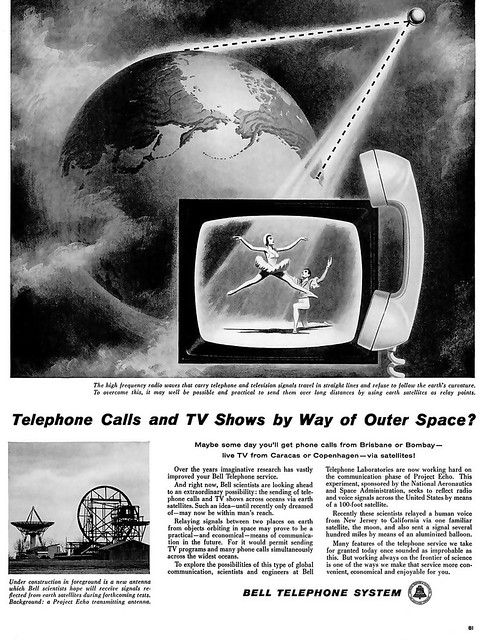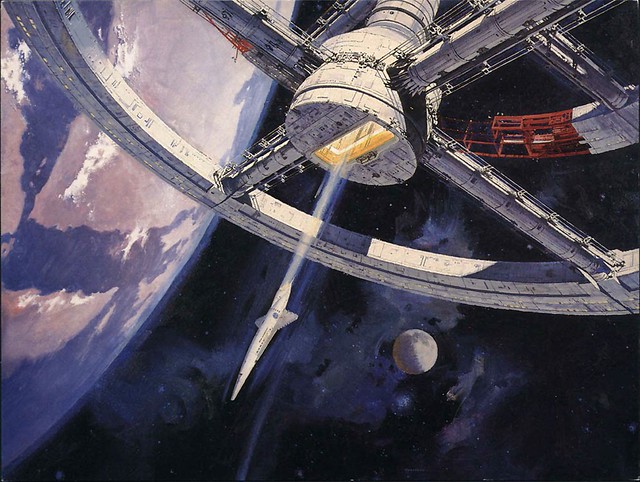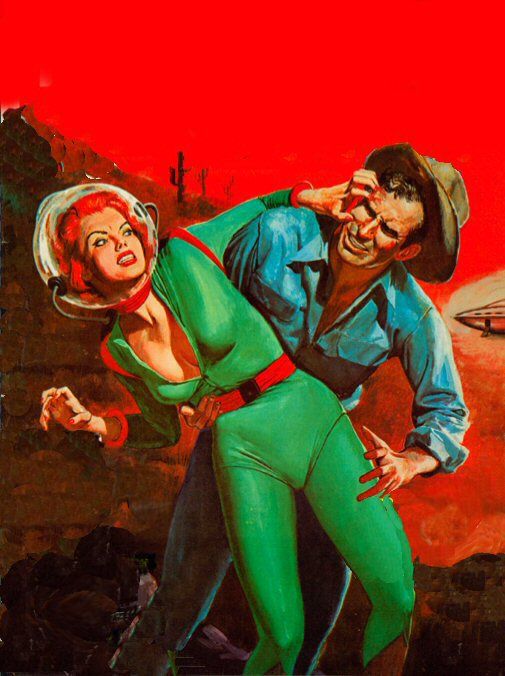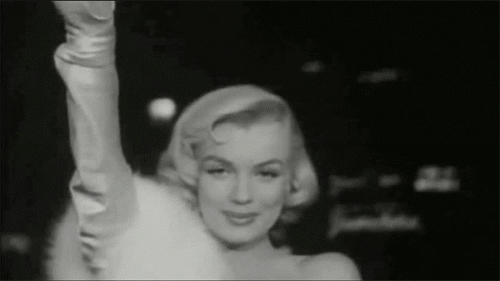Internet Debris

A collection by Neal McKenna
McKenna Ink Thesis Editing Service
To add your comments,
click here.
NOTHING posted here is mine!
Internet Debris does not claim rights
to any of the photos or media content posted to the site.
No copyright infringement is intended.
Internet Debris

A collection by Neal McKenna
McKenna Ink Thesis Editing Service
To add your comments,
click here.
NOTHING posted here is mine!
Internet Debris does not claim rights
to any of the photos or media content posted to the site.
No copyright infringement is intended.
A collection by Neal McKenna
McKenna Ink Thesis Editing Service
To add your comments,
click here.
NOTHING posted here is mine!
Internet Debris does not claim rights
to any of the photos or media content posted to the site.
No copyright infringement is intended.
Back to
the Retro Future
AGAIN.
Predicting the future
It’s not a criticism; It’s an observation
 Mike CoxOne of the interesting things to watch for in an old movie about life down the road is how well the future is depicted. Cheesy sci-fi flicks from the 50s always tried to predict how life would be in the year 2000. Most of the stuff they foresaw looks downright goofy to those of us in the real 21st Century.
Mike CoxOne of the interesting things to watch for in an old movie about life down the road is how well the future is depicted. Cheesy sci-fi flicks from the 50s always tried to predict how life would be in the year 2000. Most of the stuff they foresaw looks downright goofy to those of us in the real 21st Century.A scene in a low budget space movie I watched recently featured a futuristic apparatus that transported people to another dimension. The transporters used an otherworldly telephone to operate the time travel machine. Except the thing had a dial. The writers couldn’t even envision push button phones.
Space ships from old movies are rigged with countless gauges to measure things like temperature, speed, and outside conditions; gauges that invariably have needles and a scale. No one predicted we’d have digital readouts by now. Individual rocket suits, yes. LED, no. It makes you wonder who was doing the research for the movie companies.
Jules Verne was able to accurately predict several things that eventually became reality in the books he wrote. Why not Metro Goldwyn Meyer? The movie experts consistently miss the ordinary things. Maybe the writers are too mentally tired from dreaming up those futuristic looking protective suits.
All the space ships and transport vehicles looked like 1959 Chryslers. Big fins and audacious lines. The guidance systems resemble the controls on an old Maytag washing machine. Even well done movies are susceptible to lapses in predicting the future.
I watched Blade Runner the other night: Ridley Scott’s first real success was considered a marvel in movie making by most experts. The flick featured flying cars and fugitive robots with human characteristics that look good especially in a dirty, desolate world. In one scene I noticed Harrison Ford’s character reading a newspaper while involved in a stake out. It makes one wonder; at least this one, what are we missing now that will look goofy in 50 years.
If the prognosticators are correct, we’ll be fighting each other over water instead of oil and will need to wear protective suits to go outside here on Earth. If Glenn Beck is right, we’ll all be living a life of bliss, working on farms and doing stuff ourselves without the benefit of interfering governments.
But those are the big things. Movie makers and TV preachers have been predicting a natural catastrophe for decades. I’m wondering about those little things we take for granted. What will happen to things like snacks, beer, and TV programs? Will we still obsess over college football? What about pets?
If there is indeed a shortage of food and water, live pets will be an unnecessary luxury. All animal companions will have to be robots that don’t require sustenance, which should mean better pet behavior. No yapping or accidents on the brand new carpet. Still, you know people will consider themselves special because the pet they own is perceived as better than the average robot animal companion.
Dipheads will have those stupid bumper stickers on their flying cars; it’s hard to be humble when you own an Intel 320 K9-1. Story via The Columbia Star
Retro Futurism
By Carla McKinley
Unfortunately for all of us, people’s visions of the future are often much more exciting and interesting than what actually happens. During the first half of the twentieth century, people’s opinions of the future were optimistic, to say the least (flying cars, robots that do your housework, rayguns). Now that we’re past the time when these things were supposed to be reality, they’ve become a sort of nostalgic vision of the future. In the 1980’s someone coined the term ‘retro futurism’ to describe this genre.
Syd Mead, a conceptual retro-futuristic illustrator who also helped design the sets for the movies Tron, Blade Runner, and Alien, has created some of my favorite visions of the future. His illustrations are sleek, saturated neon landscapes that often feature some sweet rides that sort of reek of the 80’s. I’m still waiting for my flying car. See more of his work on Flickr. Via Big Wheel
Scanning the History of Bar Codes
Here’s another Retro Future entry originally written
in 1999 celebrating the futuristic applications
of the bar code.

Giant leaps in technological progress are often measured in little, off-hand moments. Like the time, 25 years ago, that a supermarket clerk at Marsh’s Supermarket in Troy, Ohio, picked up a ten-pack of Wrigley’s spearmint gum and glided it carefully over a scanner. In the blink of an eye, the bar code revolution had begun!
These days, most of us take bar codes for granted (but not all of us—former President George Bush seemed positively astonished to see a bar code scanner on the campaign trail in 1992). Bar codes were even used to verify the authenticity of Mark McGwire’s record-setting baseballs in 1998.
The most famous application of a bar code may have been the giant symbol that ran on the cover of MAD magazine in April, 1978, accompanied by the sarcastic headline: “(MAD) Hopes This Issue Jams Every Computer in the Country…For Forcing Us To Deface Our Covers With This Yecchy UPC Symbol.”

The pranksters at MAD weren’t the only ones to openly express disdain for the newfangled technology. At first, shoppers weren’t so sure they liked them either. Instead of fast-moving lines, they experienced long and agonizing waits at the check-out counter as cashiers unfamiliar with the new technology searched up and down for the elusive bar code.
These prolonged displays of ineptitude left some customers wondering why these zebra-striped symbols were even necessary. Wasn’t a good old cash register faster and more reliable?
Fortunately, the situation improved (better scanners and familiarity with the process) and soon the technology began to deliver the faster lines and convenience it promised.
The bar code was hardly an overnight success story; in fact, it took almost thirty years to be adopted.

The story begins in 1948, when Bernard Silver and Norman J. Woodland devised a crude “Bull’s Eye Code” in hopes that it might one day be adopted as an automated checkout system. Silver and Woodland understood the antiquated cash register—long a fixture of retailing—could not maintain inventory or collect data. Their code could do that and more.
But, at first, the news was not encouraging. Computers were still too primitive, lasers had yet to be invented, and the response from industry was lukewarm.
The crucial turning point occurred in 1951 when the first optical character recognition (OCR) scanner was invented. This was the breakthrough that Silver and Woodland needed. Their revolution in retailing was finally possible.

Sixteen years later, the first bar code scanning system was installed at a Kroger Supermarket in Cincinnati, Ohio in 1967. But several kinks had yet to be ironed out. A major issue was uniformity. Hundreds of different bar codes potentially could create a full-scale retailing disaster. In response, in 1973, the Uniform Code Council was formed in Dayton, Ohio to establish the Universal Product Code.
One year later, on the outskirts of Dayton, the first UPC-reading scanner was installed at Marsh’s Supermarket. Industry experts flew in from all over the world—some as far away as Japan and Sweden—to witness the fabled ten-pack of Wrigley’s Gum being scanned. When the correct price appeared (67¢), a cheer rang out.
That was June 26, 1974. Twenty-five years later, hundreds of thousands companies are now using bar codes. And, thanks to library cards, the average person carries at least one bar code around in their wallet or pocketbook.

The bar code’s influence continues to grow. In hospitals, bar codes bracelets are attached to newborn babies to ensure their safety.
A few people are convinced the “Mark of the Beast” is hidden somewhere within the bar code as part of a vast global conspiracy. Although it seems a tad bit unlikely (wouldn’t the devil be surfing the net by now?) it does point out one fact: the bar code has finally arrived!
You may be wondering what happened to Silver and Woodland — the so-called “fathers of the bar code.” Neither reaped the rewards of their invention. But there was one delicious twist for Woodland: in 1992, he was awarded the prestigious National Medal of Technology by that barcode enthusiast President George Herbert Walker Bush.
2009 addendum: Wow, we had another President Bush… I’d almost forgotten! Also, here’s an interesting new article about the custom bar code craze in Japan from Fast Company magazine.
Article via Retrofuture.Com
Retro Future Fashion
In the future, our clothes will be shiny… or so it seemed to fashion forecasters of the 1960s. Monotone TV demanded something extra when depicting people of the future but with the advent of color TV, letting it shine looked all too ludicrous.

Mike Myers was a child of the sixties and as such, he had to be influenced by 1965’s Dr. Goldfoot and the Bikini Machine and the ‘66 sequel, Dr. Goldfoot and the Girl Bombs. Femme fatales, secret agents, fembots… but mainly fembots! In the future, women will be beautiful, deadly and barely dressed in gold or silver swimwear. Looks like they got that right at least!

Well, not really, but they sometimes look the part… which means they look green. Forget the gray aliens, where da green women at? Star Trek’s writers knew all too well that James T Kirk would not be able to resist the charms of a green-skinned Orion slave girl. Then again, when did Kirk resist ANY female of ANY species?

Movies of the mid-century put a peculiar stamp on futuristic fashions, so much so that one wonders whether the producers were serious. Other times budget considerations took priority, as in the costumes from 1964’s Santa Claus Conquers The Martians (above left) - featuring a very young Pia Zadora.
Closing out this feature is that cybernetic sweetheart, Seven of Nine from Star Trek Voyager. Put plainly, Seven makes the list because, in her skintight metallic bodysuit, she makes us lust. Jeri Ryan may have moved on to bigger and better roles after the reformed Borg she played in Voyager but she’ll never be able to top this one. Resistance is futile? Who’s resisting? And as for the future, it certainly looks exciting.

Image Via X-Ray Delta One
Flat Screen TV
Caption from 1961: TV viewers of the 1970s will see their programs on sets quite different from today’s, if designs now being worked out are developed. At the Home Furnishings Market in Chicago, Illinois, on June 21, 1961, a thin TV screen is a feature of this design model. Another feature is an automatic timing device which would record TV programs during the viewers’ absence to be played back later. The 32x22-inch color screen is four inches thick.
2001 Space Station (1968)

In this vision of the future, the space station is the size of a small city with every luxury and amenity.
Notice the Pan Am space liner? ...If only.
Image Via X-Ray Delta One

I'm really glad this prediction of the future didn't come to be. That smog looks nasty but I have to admit the hover car is pretty nifty.
Image via Retro Futurism Live Journal
Bobby Darin’s custom built DiDia 150

Bobby Darin was an unbelievable musical talent that died well before his time. This is the car he loved. It was designed by clothing designer Andy DiDia and is the single example of the designer's attempt at an automobile.
Construction of this car ran from 1953 until 1960. Darin wanted the car very badly and purchased it for $20,000 (that would be approximately $1,500,000 in today’s dollars). This spacecraft on wheels is powered by a V8 engine and has a 125 inch wheelbase! This was not a show car. Bobby and his wife, Sandra Dee often drove it to the Academy Awards. It also appeared in movies of the time.
The DiDia 150 is hand-fashioned from soft aluminum, has thermostatically controlled air conditioning, hidden headlights, tail lights that swivel as the car turns a corner, glass windows on hinges, and rust-colored seats, each with an ash tray, cigarette lighter, and radio speaker.
Darin was born in May 1936. When he was eight he overheard a doctor tell his mother that he might not live past 16 due to heart damage caused by rheumatic fever. Darin went on to record such hits as “Splish Splash,” “Dream Lover,” and “Mack The Knife,” which won him a Grammy in 1960.
Darin was nominated for an Academy Award in 1963. His record company, TM Music/Trio, launched Wayne Newton and others. Darin was with Robert Kennedy in 1968 when he was killed at the Ambassador Hotel in Los Angeles. Bobby went into seclusion for about a year after that event. In 1972, he had a TV variety show called The Bobby Darin Amusement Company that he hosted until his sudden death in 1973. Darin’s death came after surgery to correct heart problems brought on by blood poisoning. He was 37.
The hood is not open; this is a body line that goes along the entire side of the car and looks like it might be part of a ventilation system.

The rear of the car is very much like the wild concept cars of the 50s that we were assured we would be driving (or flying) in 1980!



As wild as the exterior is, the interior seems almost practical.

Love those controls on top of the dash but I am sure they would give today’s government vehicle safety regulators a heart attack.
.
Text & Images Via Legendary Collector Cars


The rear of the car is very much like the wild concept cars of the 50s that we were assured we would be driving (or flying) in 1980!



As wild as the exterior is, the interior seems almost practical.

Love those controls on top of the dash but I am sure they would give today’s government vehicle safety regulators a heart attack.
.

Text & Images Via Legendary Collector Cars

Singer Bobby Darin stands beside his hand-made DiDia 150, also called the "Bobby Darin Dream Car," unveiled on March 31, 1961, in Hollywood, California. Andrew Di Dia, who designed and built the "dream car," took it on a nationwide tour of the USA before finally delivering it to Darin. Via The Atlantic
Now Let's have a look at the Japanese Retro Future

Images via Lines and colors
Hmmmm... Just as far off the mark as everybody else.
Cowboys and Aliens didn't work then...

...Don't work now!
Image via Retro Futurism Live Journal
To add your comments, click on
links to this post
here or below. It will take you to a stand-alone copy of this page. There, you will find the comments box at the very bottom, so feel free to let 'er rip.











No comments:
Post a Comment